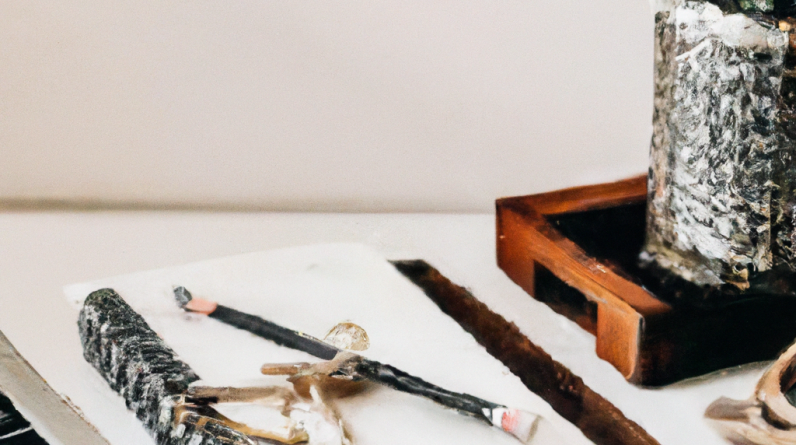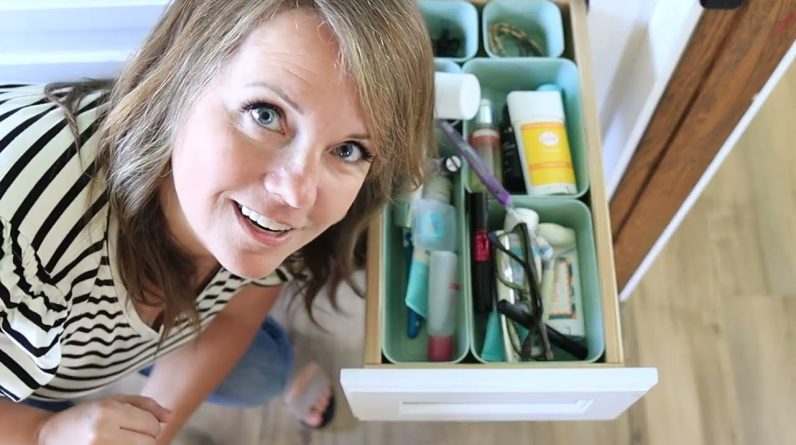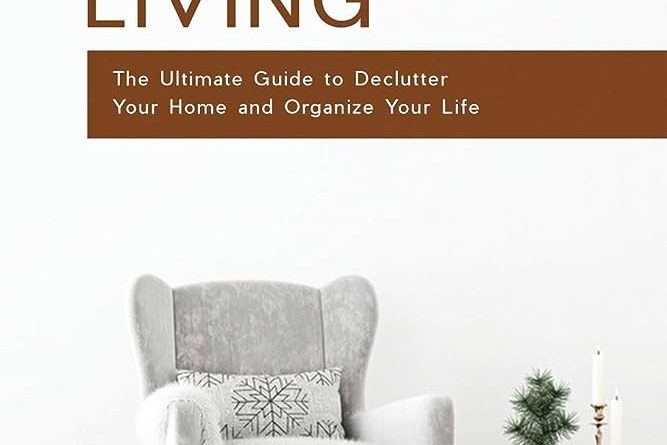
Are you feeling overwhelmed by the clutter in your life? If so, then “The Ultimate Guide to Minimalism: Decluttering Your Life” is here to help. This blog is a must-read for anyone looking to simplify and streamline their living space, their mind, and their daily routines. Whether you’re a beginner or a seasoned minimalist, you’ll find practical tips, insightful advice, and inspiring stories to guide you on your journey towards a more intentional and fulfilling life. Say goodbye to the chaos and hello to the freedom of minimalism!
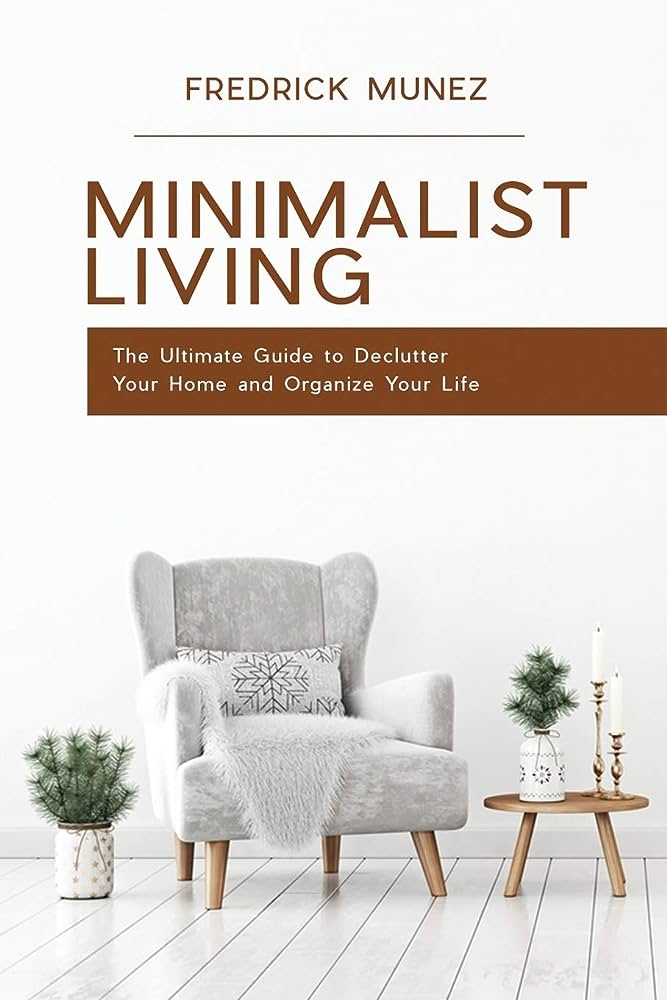
Table of Contents
Defining Minimalism
What is minimalism?
Minimalism is a lifestyle movement that focuses on living with less physical and mental clutter, allowing you to prioritize what truly matters to you. It emphasizes simplicity, intentionality, and mindfulness in all aspects of life. By consciously choosing to remove the excess and unnecessary, minimalism aims to create space for what brings joy and fulfillment.
The principles of minimalism
Minimalism is guided by a set of principles that help individuals adopt and maintain a minimalist lifestyle. These principles include:
- Intentionality: Being thoughtful and deliberate in your choices and actions.
- Simplicity: Striving for a simple and uncluttered life in all areas.
- Mindfulness: Being present and focused on the present moment and your experiences.
- Essentialism: Identifying and focusing on what truly adds value and brings joy to your life.
- Contentment: Finding satisfaction and happiness in having less and appreciating the present moment.
Benefits of embracing minimalism
Embracing minimalism can yield numerous benefits for your well-being and overall quality of life:
- Reduced stress and overwhelm: With fewer possessions and commitments, you can experience a sense of calm and clarity.
- Increased focus and productivity: Decluttering physical and mental spaces allows you to better concentrate on your goals and priorities.
- Enhanced creativity: Removing distractions and simplifying your surroundings can ignite your creativity and inspiration.
- Improved finances: By eliminating unnecessary expenses and adopting mindful spending habits, you can achieve financial freedom and stability.
- Deeper relationships: Prioritizing meaningful connections over material possessions allows you to invest more time and energy in your relationships.
- Environmental impact: Consuming less and living with minimalism helps reduce waste and contribute to a more sustainable planet.
Getting Started with Minimalism
Assess your current lifestyle
Before diving into minimalism, take some time to assess your current lifestyle. Consider the areas of your life that feel cluttered or overwhelming. Reflect on how you spend your time, what possessions you own, and how your habits and routines contribute to your overall well-being. This self-reflection will provide a foundation for understanding which aspects of your life you want to simplify and declutter.
Identify your areas of focus
Once you have a clear understanding of your current lifestyle, identify the areas of focus where you would like to implement minimalism. This could be physical spaces, such as your home, office, or wardrobe, or it could be intangible aspects, such as your digital life, schedule, or finances. Identifying your areas of focus will help you set clear goals and stay motivated throughout your minimalist journey.
Setting goals for decluttering
Setting achievable goals is crucial when embarking on a minimalist lifestyle. Start by breaking down the areas of focus you’ve identified into smaller, actionable goals. For example, if you’re focusing on decluttering your physical space, set goals for decluttering specific rooms or categories of items. By setting realistic goals, you’ll be able to measure your progress and celebrate your achievements along the way.
Decluttering Your Physical Space
Create a decluttering plan
To begin decluttering your physical space, create a plan of action. Start by choosing a specific area or room to tackle first. Break down the decluttering process into manageable tasks, such as sorting, categorizing, and organizing. Having a plan in place will help you stay focused and prevent overwhelm.
Tackle one area at a time
Instead of trying to declutter your entire home at once, focus on one area or room at a time. This approach allows you to give each space the attention it deserves and prevents you from feeling overwhelmed. Begin with a small area, such as a drawer or a closet, and gradually work your way through the larger spaces.
Sort and categorize your belongings
As you declutter each area, sort your belongings into categories. Create piles for items you want to keep, donate, or discard. Ask yourself if each item serves a purpose in your life and brings you joy. If not, consider letting go of it. Sorting and categorizing will help you make mindful decisions about what to keep and what to let go.
Decide what to keep, donate, or discard
When deciding what to keep, donate, or discard, be honest with yourself about the usefulness and sentimental value of each item. Keep only what you truly need and love. Consider donating items that could benefit others and discard anything that is damaged or beyond repair. Remember, minimalism is about curating a life filled with what matters most to you.
Organize your remaining items
Once you have decluttered and decided on the items you are keeping, it’s time to organize them effectively. Use storage solutions that make sense for your lifestyle and the items you own. Invest in functional containers, bins, and organizers to keep everything tidy and easily accessible. Focus on creating a space that promotes a sense of calm and order.
Maintaining a clutter-free physical space
To maintain a clutter-free physical space, build habits of regular decluttering. Set aside dedicated time every month or season to assess and declutter your belongings. Avoid impulsive purchases and practice mindful consumption. Embrace the philosophy of “one item in, one item out,” meaning that for every new item you bring into your space, you let go of something old.
Decluttering Your Digital Life
Evaluate your digital habits
In today’s digital age, decluttering your digital life is just as important as decluttering your physical space. Start by evaluating your digital habits and identifying areas that need improvement. Reflect on how much time you spend on social media or consuming digital content. Notice if any digital habits cause stress or distract you from being present.
Sort and organize your digital files
Organizing your digital files is crucial for efficiency and peace of mind. Create folders and subfolders to categorize your files, making it easier to locate what you need. Delete any unnecessary files and organize your digital photos into albums. Develop a consistent naming convention for your files to simplify future searches.
Minimize your digital distractions
Digital distractions can hinder productivity and increase mental clutter. Take steps to minimize these distractions by decluttering your digital devices. Remove unnecessary apps and bookmarks from your phone and computer. Customize your notifications to only receive important alerts. Consider using productivity apps or browser extensions to limit time spent on distracting websites.
Simplify your online presence
Evaluate your online presence, including your social media accounts, email subscriptions, and online subscriptions. Unfollow or unfriend accounts that no longer align with your values or bring you joy. Unsubscribe from email lists that fill your inbox with clutter. Simplify your online presence to focus on the most meaningful connections and content.

Simplifying Your Wardrobe
Assess your current wardrobe
Start simplifying your wardrobe by assessing your current clothing collection. Take everything out of your closet and drawers and evaluate each item. Consider when was the last time you wore it, how it fits, and if it reflects your personal style. Be honest with yourself about what items you truly love and feel confident wearing.
Identify essential items
Identify the essential items that form the foundation of your wardrobe. These are versatile pieces that can be mixed and matched to create various outfits. Classic pieces like a well-fitting pair of jeans, a white button-down shirt, and a little black dress are examples of essential items that never go out of style. Focus on quality over quantity.
Create a versatile wardrobe
With your essential items as a starting point, build a versatile wardrobe by adding a few key pieces that complement your personal style. Choose items that can be dressed up or down and work well together. Opt for neutral colors and timeless styles that can be easily mixed and matched. This approach will allow you to create a range of outfits with fewer items.
Donate or sell unnecessary clothing
Once you have identified the essential items and created a versatile wardrobe, it’s time to let go of the unnecessary clothing. Consider donating items that are in good condition to charities or local organizations. If you have designer or high-quality pieces, you may also consider selling them online or at consignment stores. By giving your clothing a new life, you contribute to sustainable fashion practices.
Organize your simplified wardrobe
Organize your simplified wardrobe in a way that makes getting dressed a breeze. Arrange your clothing by category, such as tops, bottoms, dresses, and outerwear. Within each category, organize items by color or style. Consider investing in storage solutions like hangers, bins, or drawer dividers to keep your clothes easily accessible and wrinkle-free.
Streamlining Your Finances
Assess your financial situation
Streamlining your finances begins with assessing your current financial situation. Review your income, expenses, and investments. Take note of any debt and evaluate your spending habits. Understanding your financial standing will allow you to make informed decisions and set realistic goals for simplifying your finances.
Create a budget
Creating a budget is essential for simplifying and organizing your finances. Start by categorizing your expenses into fixed and variable categories. Determine how much you can allocate towards each category and set savings goals. Consider using budgeting apps or spreadsheets to track your expenses and monitor your progress towards your financial goals.
Automate your finances
Automating your finances can save you time, reduce stress, and promote financial stability. Set up automatic bill payments and contributions to your savings or investment accounts. Schedule regular transfers to pay off debt or build an emergency fund. Automating your finances ensures that you stay on track and prevents missed payments or unnecessary fees.
Reduce unnecessary expenses
To streamline your finances, identify and reduce unnecessary expenses. Review your recurring subscriptions and cancel those that you no longer use or find value in. Analyze your discretionary spending and identify areas where you can cut back. Practice mindful spending and ask yourself if a purchase aligns with your values and brings true satisfaction.
Simplify banking and bill payments
Simplifying your banking and bill payments will save you time and minimize administrative tasks. Consider consolidating your accounts to reduce fees and streamline management. Set up alerts for bill due dates to avoid late payments. Opt for paperless statements to reduce clutter and simplify record-keeping. Aim for a seamless and stress-free financial process.
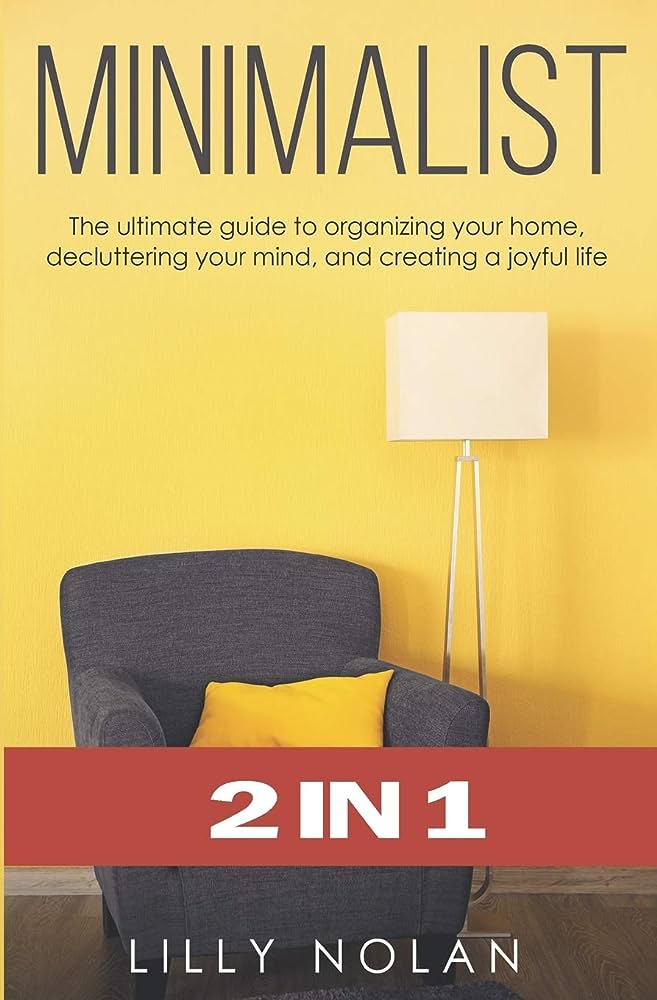
Simplifying Your Schedule
Assess your current commitments
Simplifying your schedule requires a mindful evaluation of your current commitments. Take stock of the activities, obligations, and responsibilities that fill your days. Determine which commitments align with your priorities and bring you joy and fulfillment. Be willing to let go of activities that no longer serve you or drain your energy.
Prioritize your tasks and activities
Once you have assessed your commitments, prioritize your tasks and activities based on importance and urgency. Focus on the activities that align with your goals and values. Learn to distinguish between tasks that are essential and those that can be delegated or eliminated altogether. By prioritizing what truly matters, you create space for meaningful experiences and personal growth.
Learn to say ‘no’
Learning to say ‘no’ is a crucial skill for simplifying your schedule. Recognize that your time and energy are valuable resources. Be selective about the commitments you take on and only say ‘yes’ to those that align with your priorities. Practice setting boundaries and communicating your limits politely but firmly. Saying ‘no’ frees up time for activities that truly matter to you.
Create a daily or weekly routine
Creating a routine helps streamline your schedule and promotes productivity and efficiency. Establish a consistent daily or weekly schedule that incorporates your priorities and allows for downtime and self-care. Plan your most important tasks during your peak energy times and avoid multitasking. A well-designed routine provides structure and reduces decision fatigue.
Practice mindfulness and relaxation
Incorporate mindfulness and relaxation techniques into your daily schedule to combat stress and promote a sense of calm. Dedicate time for activities that help you recharge and unwind, such as meditation, yoga, or spending time in nature. By intentionally scheduling moments of relaxation, you enhance your overall well-being and reduce mental clutter.
Embracing Minimalist Design
Understanding minimalist design principles
Minimalist design emphasizes simplicity, functionality, and clean lines. It removes unnecessary elements and focuses on essential features. Embracing minimalist design means letting go of excess decorations, ornate patterns, and clutter. It creates spaces that are visually appealing, calming, and easy to maintain.
Incorporating minimalism in your home
To incorporate minimalism into your home, start by decluttering and organizing your physical space. Remove unnecessary decorations, furniture, and knick-knacks that add visual clutter. Opt for neutral color palettes and natural materials. Choose functional and versatile furniture pieces that serve multiple purposes. Creating an uncluttered physical environment promotes a sense of peace and tranquility.
Choosing minimalist furniture and decor
When choosing furniture and decor, focus on quality, functionality, and timeless design. Opt for pieces that serve a purpose and fit well within your space. Select furniture with clean lines and minimal ornamentation. Avoid excessive patterns or busy prints. Choose decor items sparingly, and ensure they bring joy and contribute to the overall aesthetic.
Creating functional and clutter-free spaces
Creating functional and clutter-free spaces is at the core of minimalist design. Aim for rooms that have a clear purpose and flow well. Use storage solutions that conceal or minimize visual clutter, such as hidden storage boxes or built-in cabinetry. Designate spaces for each item, ensuring everything has a place. Regularly declutter and maintain your spaces to avoid accumulating unnecessary items.
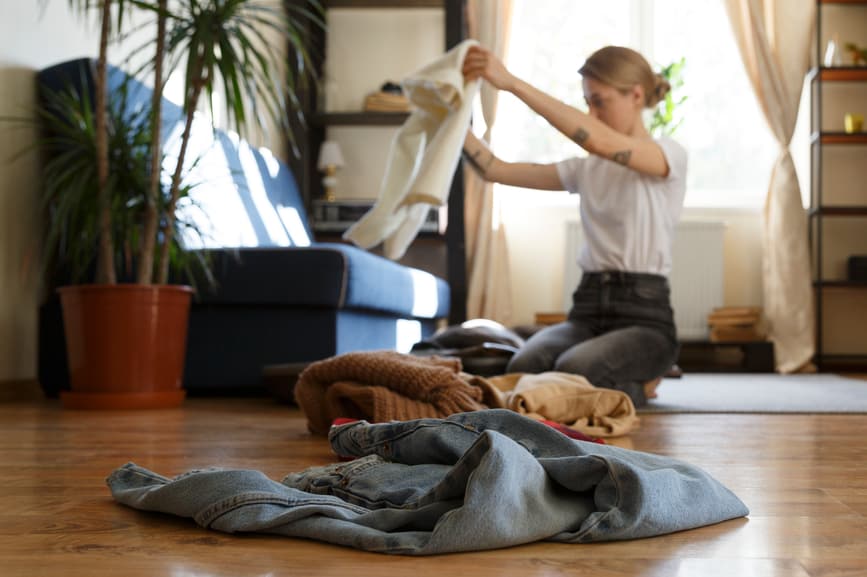
Minimalism and Mental Clutter
Recognizing mental clutter
Mental clutter refers to the excessive thoughts, worries, and distractions that fill our minds. It can lead to stress, anxiety, and difficulty focusing. Recognize the signs of mental clutter, such as constant overthinking, feeling overwhelmed, or difficulty making decisions. Becoming aware of mental clutter is the first step towards simplifying your mind.
Developing a minimalist mindset
Developing a minimalist mindset involves shifting your focus from the external to the internal. Practice gratitude and appreciation for what you already have. Let go of the need for constant consumption and external validation. Cultivate contentment and embrace the beauty of simplicity. Adopting a minimalist mindset helps declutter your thoughts and allows you to focus on what truly matters.
Practicing mindfulness and meditation
Mindfulness and meditation are powerful tools to declutter your mind and cultivate a sense of calm. Set aside dedicated time each day to practice mindfulness or meditation. Pay attention to your thoughts and emotions without judgment, and let them pass by without clinging to them. Regular mindfulness practice helps reduce mental clutter and promotes inner peace.
Embracing simplicity in thoughts and emotions
Embracing simplicity in your thoughts and emotions means letting go of unnecessary complexity and drama. Practice letting go of negative thoughts and emotions that do not serve you. Focus on positive and constructive thinking. Simplify your emotional responses by choosing to respond with kindness, compassion, and empathy. By embracing simplicity, you create mental clarity and emotional well-being.
Maintaining Your Minimalist Lifestyle
Regular decluttering and organization
To maintain your minimalist lifestyle, make decluttering and organization a regular habit. Set aside time every month or season to reassess your belongings, digital files, and commitments. Let go of anything that no longer serves you or aligns with your values. Organize your physical and digital spaces regularly to prevent accumulating clutter.
Avoiding unnecessary purchases
Avoiding unnecessary purchases is essential for maintaining a minimalist lifestyle. Before making a purchase, ask yourself if the item is truly necessary and aligned with your values. Take time to consider whether it brings genuine joy and adds value to your life. Practice mindful shopping and opt for quality over quantity. By being intentional with your purchases, you prevent clutter from reentering your life.
Finding alternatives to consumerism
Minimalism encourages finding alternatives to consumerism by prioritizing experiences over material possessions. Seek ways to enjoy life without relying on excessive consumption. Instead of buying physical gifts, consider gifting experiences or donating to a meaningful cause. Embrace sustainable practices, such as repurposing or upcycling items. By finding alternatives to consumerism, you free yourself from the cycle of constant accumulation.
Building a supportive minimalist community
Surrounding yourself with like-minded individuals can be valuable for maintaining a minimalist lifestyle. Seek out online communities, social media accounts, or local groups that focus on minimalism and decluttering. Engage in discussions, share experiences, and learn from others who share similar values. Building a supportive minimalist community provides encouragement and inspiration.
Continual self-reflection and evaluation
Continual self-reflection and evaluation are crucial for maintaining and evolving your minimalist lifestyle. Regularly assess your values, priorities, and goals. Reflect on how minimalism has positively impacted your life and areas where you can continue to simplify. Be open to adjusting and refining your approach as your needs and circumstances change. By continually evaluating, you ensure that minimalism remains a meaningful and sustainable practice for you.
In conclusion, minimalism is a lifestyle that encourages simplifying and decluttering all aspects of your life. By embracing minimalism, you can experience benefits such as reduced stress, increased focus, improved finances, and deeper relationships. Getting started with minimalism involves assessing your current lifestyle, identifying areas of focus, and setting goals for decluttering. Throughout your minimalist journey, decluttering your physical space, digital life, wardrobe, finances, schedule, and embracing minimalist design can help streamline and simplify your life. It’s important to also address mental clutter by cultivating a minimalist mindset, practicing mindfulness, and embracing simplicity in thoughts and emotions. Maintaining a minimalist lifestyle involves regular decluttering and organization, avoiding unnecessary purchases, finding alternatives to consumerism, building a supportive community, and continually reflecting and evaluating. By committing to minimalism, you can create a life filled with intention, meaning, and joy.







